Types of therapy
Shocks
•Painful
•Delay in treatment due to charge time (~10s)
•Use more battery
•Decrease QOL
ATP – Anti-tachycardia pacing
•Different types
•Burst, scan, ramp
•Immediate tx of arrhythmia – no charge time
•Pain free (relatively)
Shock details
The effects of an electrical shock vary as a function of the energy delivered. A low-energy shock, on the order of 1 Joule (J), delivered in the vulnerable period, can induce an arrhythmia.
The upper limit of vulnerability corresponds to the lowest shock energy, which, when delivered during the ventricular vulnerable period, does not induce VF, a value that has been correlated with the defibrillation threshold.
The probability of arrhythmia termination increases thereafter, along an exponential curve, as the shock (synchronized with the R wave) amplitude increases.
Beyond a certain strength, however, the risk of re-inducing an arrhythmia increases as well, limiting the success of the therapy.
An excessively strong shock may also cause myocardial injury.
Abbott shock details
Most programmability options out of all devices
Waveform
•Biphasic or monophasic
Waveform mode
•Tilt or pulse width
Rv polarity
•Anode or cathode
Phase 1 tilt or
•65%
Phase 1 and phase 2 pulse width
•5.5ms
Abbott Programming
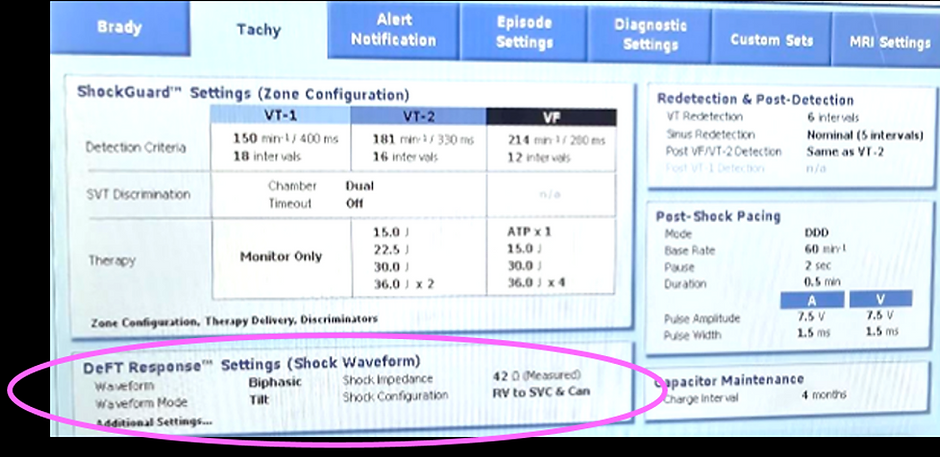

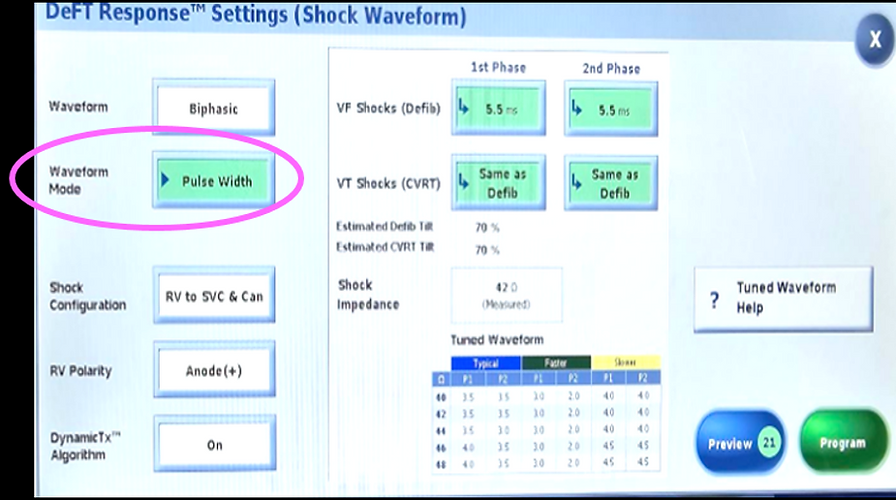
Biotronik shock details
Waveform not programmable
Biphasic waveforms
Tilt 60%/50%
Phase 1 voltage is 100% (switching voltage 40%)
Phase 2 cut of voltage 20%
2nd shock can be programmable to biphasic II, voltage/controlled pulse duration
•Phase 1 voltage load is 100% (switching voltage 40% (same as phase 1 in standard biphasic waveform)
•Phase 2 cut of is fixed 2ms pulse duration (potentially useful in pts with high DFTs)

Polarity can be programmed independently
•Normal Can +-SVC coil (anode) – RV coil (cathode)
•Reversed RV coil (anode) - Can +-SVC coil (cathode)
•Alternating alternates between normal & reversed


Biotronik programming


Boston shock details
Waveform not programmable
Biphasic waveforms
Polarity can be programmed independently
•RV coil – Can +- SVC coil
•RV coil – SVC coil (cold can)
•Initial = RV coil (anode) – Can +- SVC coil (cathode)
•Reversed = Can +- SVC coil (anode) – RV coil (cathode)

Boston programming
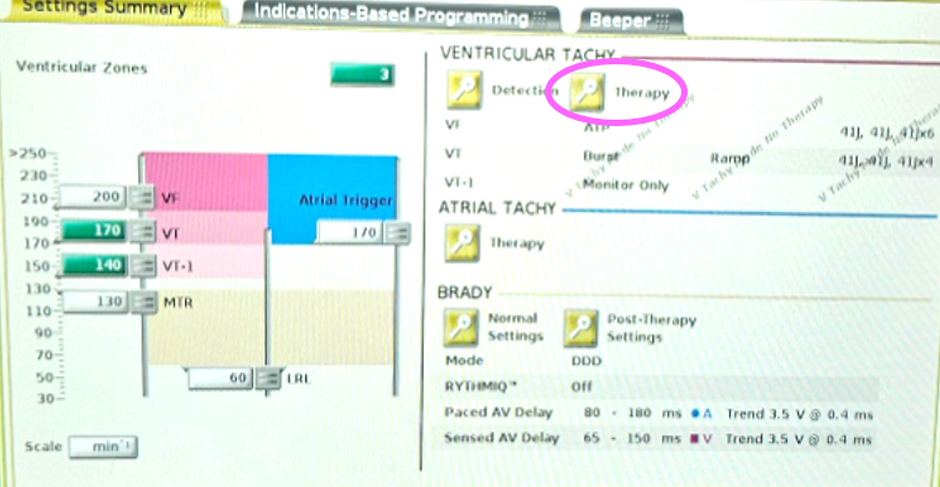
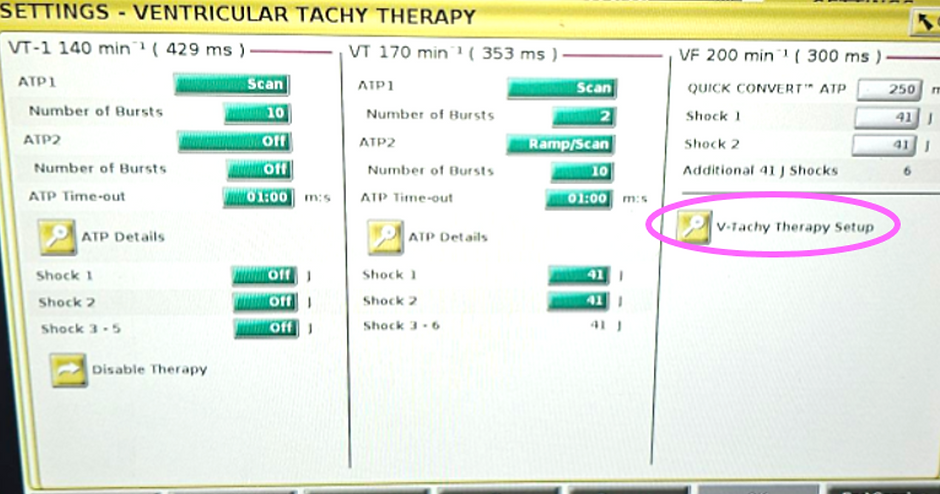

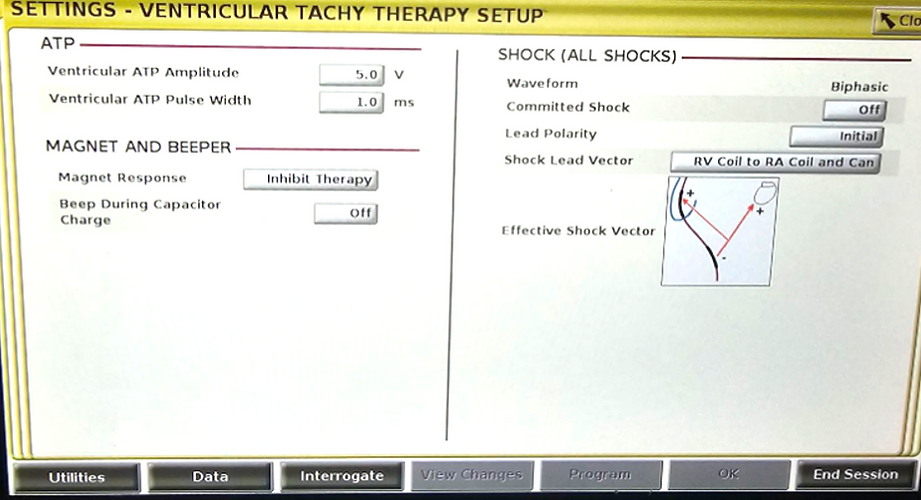
Medtronic shock details
Waveform not programmable
Biphasic waveforms
50/50 tilt
Polarity can be programmed independently
•B>AX
•AX>B
•B = RV coil
•AX = can +- SVC coil
Medtronic programming
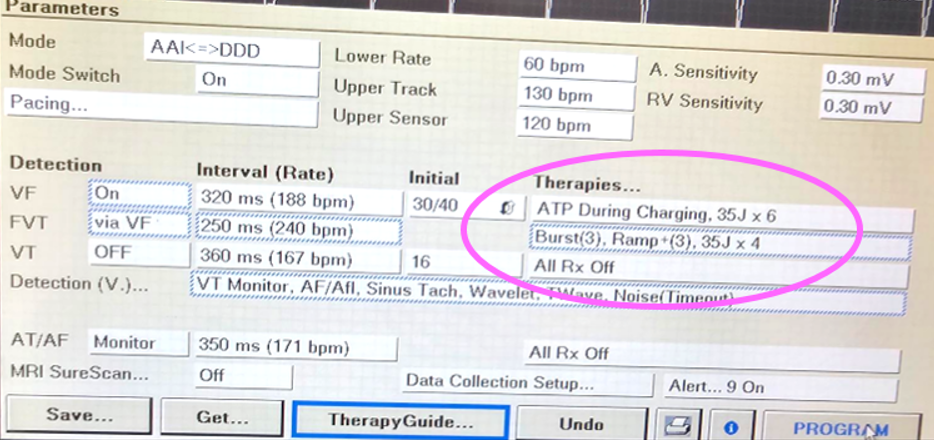
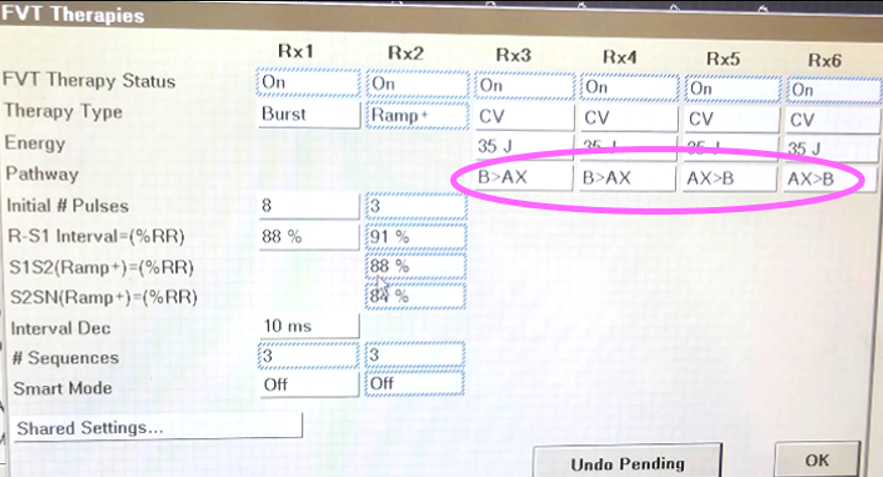
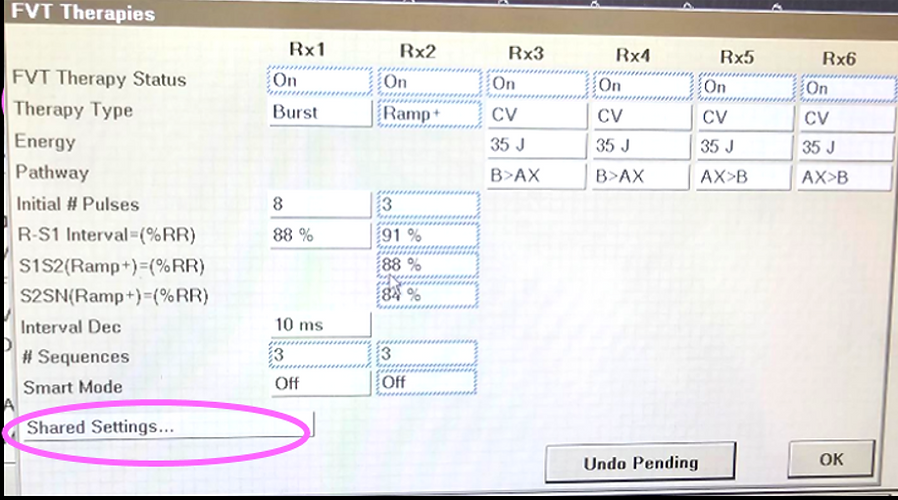

Microport shock details
Waveform & tilt not programmable
Biphasic waveforms
50/50 tilt
Polarity can be programmed independently
•Can + to RV -
•SVC + to RV –
•RV + to Can –
•RV + to SVC –
•RV + to Can & SVC -
ATP details
Burst
•Set CL (% rate of TCL)
Ramp
•Decremental coupling interval (% rate of TCL)
+
•Burst or ramp followed by an extra stimuli on the following sequence
Scan (adaptive burst) / burst & scan
•Set CL, but can decrement on following sequence
Different combinations of burst and ramp can be used in conjunction with + and scan
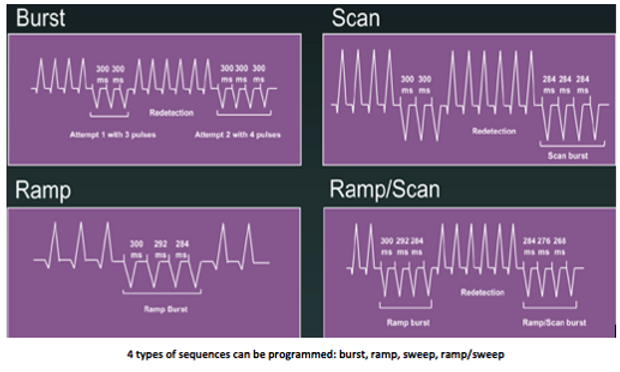
Burst in action

Ramp in action

Burst and + in action

Burst and scan in action

Ramp and scan in action

Abbott ATP options
Basic programmable options
•Number of bursts
•Number of stimuli
•Add stimuli per burst
•Burst cycle length
•Minimum burst cycle length
•Readaptive: accounts for changing rate of VT
Other ATP options
•scanning
•ramp
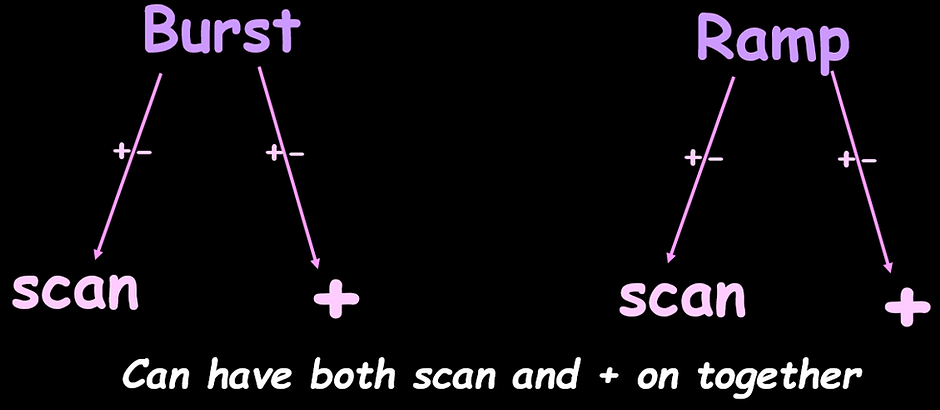
Abbott programming
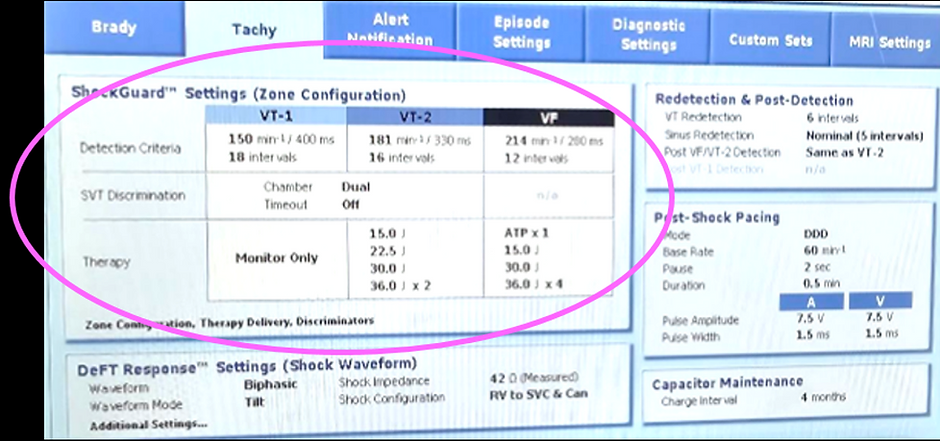



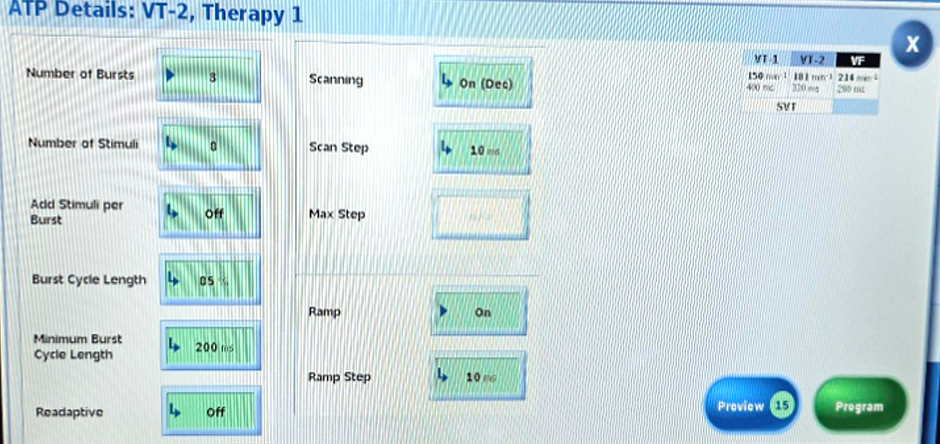
Biotronik ATP options
Basic programmable options
•Attempts
•ATP type
•Number S1
•Add S1
•R-S1 interval (%)
•S1 decrement (ms)
•Scan decrement (ms)

Biotronik programming
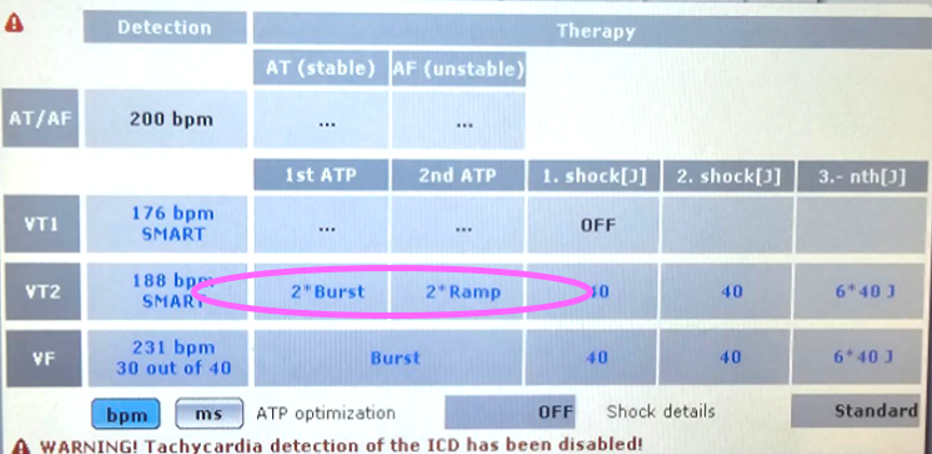
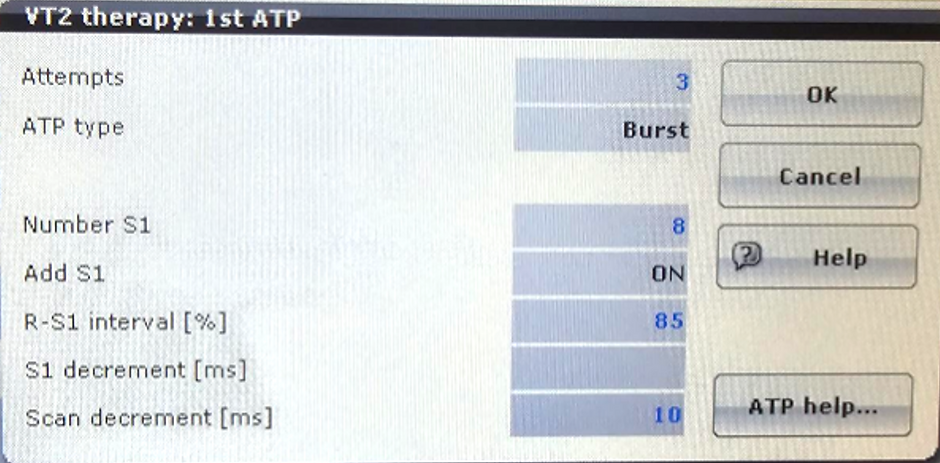
Boston ATP options
Basic programmable options
•Number of bursts
•Initial
•Increment
•Coupling interval
•Decrement
•Burst cycle length
•Ramp decrement
•Scan decrement
•Minimum interval

Boston programming



Medtronic ATP options
Basic programmable options
•Initial # pulses
•R-S1 Interval = (%RR)
•S1S2 (ramp+) = (%RR)
•S2SN (ramp+) = (%RR)
•Interval Dec
•# Sequences
•Smart Mode
Shared settings
•VV minimum ATP interval

iATP
iATP is a feature which gives “customised” ATP in real time.
Assessed the post pacing interval to determine what change to ATP is to be attempted.
•Too short: functional LOC
•In the middle: reset zone
•Too long: failure to reset

Medtronic programming


Microport ATP options
Basic programmable options
•Number of sequences
•Cycles in 1st sequence
•Cycles added per sequence
•Coupling interval
•Ramp decrement (/cycle)
•Scan decrement (/cycle)
•Time limit
•Min cycle length

Microport ATP options
Basic programmable options
•Number of sequences
•Cycles in 1st sequence
•Cycles added per sequence
•Coupling interval
•Ramp decrement (/cycle)
•Scan decrement (/cycle)
•Time limit
•Min cycle length





